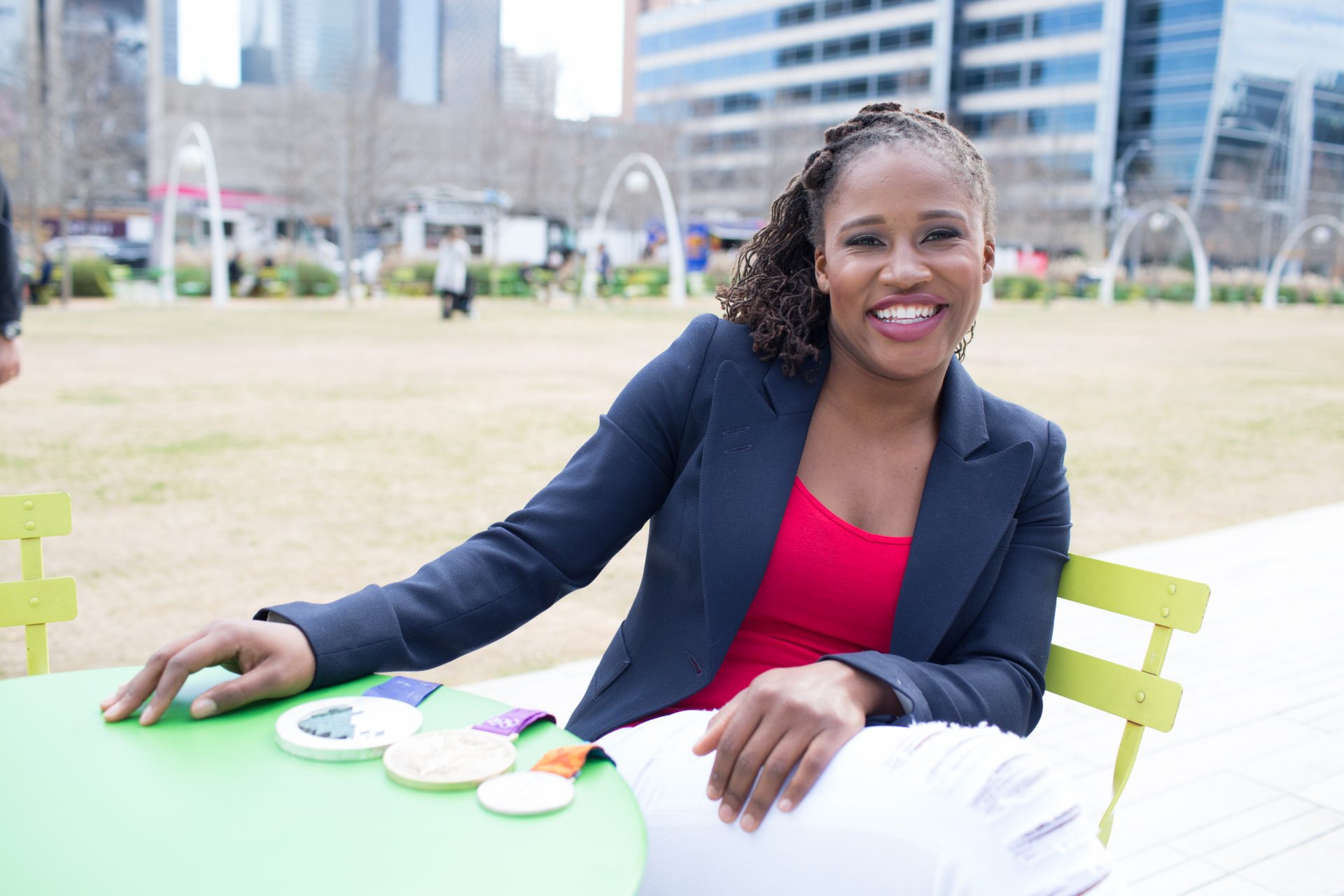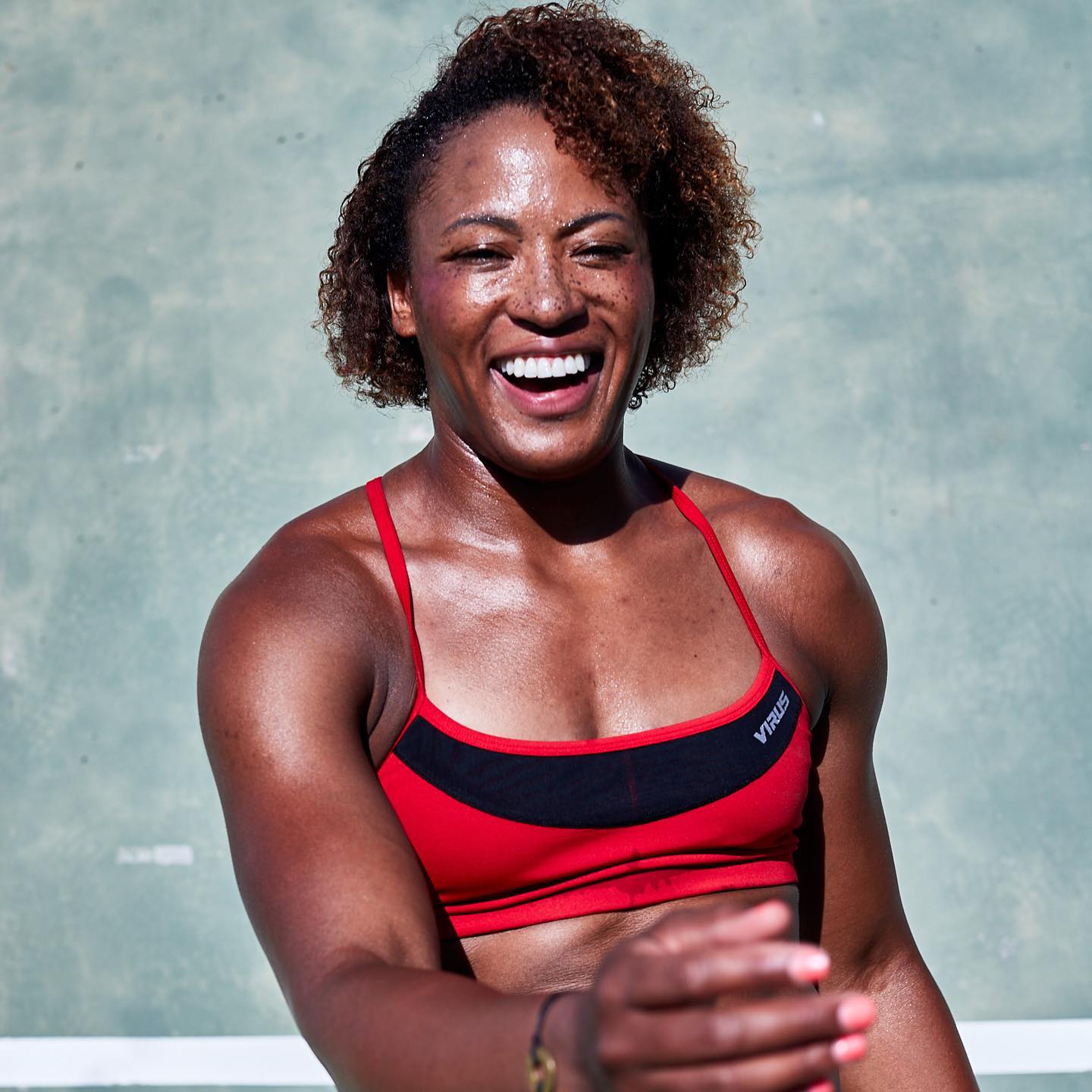Struggling to stay motivated? Get ready for a dose of easy-to-digest inspiration from five Olympic-standard athletes on how to stick to your exercise regime and make 2021 your strongest year yet.
However noble your fitness intentions, lockdown may have knocked you off-piste. You’ve not left the house for days, got dressed in weeks or seen a gym in months. Do you even know where your running shoes are at this point? But you know, even professionals can lose their mojo sometimes, and who better to get advice on motivation and inspiration than a bunch of super-strong atheletes?
We spoke to five Olympians to find out how they keep going, what they do to stay motivated and how they come back from failure. From pilates to brain dumping, here are their top fitness tips to fire up your strength journey:
You may also like
Meet the female personal trainers transforming the way we exercise
1. CONCENTRATE ON ONE HABIT CHANGE
Lauryn Williams, sprinter and bobsledder (the only US woman to hold both winter and summer Olympic medals!), reminds us to be smart with our fitness goals. “When we think about our goals, we’re frequently way too drastic – we go from eating crisps to being a clean-eating vegan overnight,” she says. “What I’ve learned to do is just choose one thing to concentrate on.” Her current focus is on reducing her intake of fried foods, which she says makes more sense than trying to change lots of different habits at once. “Instead of saying ‘I’m not eating meat and I’m not eating dairy for the whole year’, just take one thing and focus on that.”
2. CUT YOURSELF SOME SLACK
Most importantly, Lauryn emphasises that it’s important to remember we’re still human. “Give yourself some grace if you slip up!” she stresses. “I am the queen of ‘it’s the first of the month, it’s the first of the year, it’s Monday’ – I’ll take any chance to start over if I make mistakes.” Rather than starting again at the next opportunity, Lauryn suggests just acknowledging that things haven’t gone according to plan and remembering that we’re not perfect. “Don’t give up on your goal just because you didn’t do it perfectly. None of us ever do.”

3. GROUND YOURSELF IN ROUTINE
Even Olympians can struggle to get back into the groove after a holiday or break. Rachael Adams was a member of the 2016 Olympic volleyball team who brought home the bronze medal. Although she’s still at the top of her sport, Rachael says that she struggles to stay motivated after breaks. To help restart the jets, she concentrates on rebuilding a regular routine. “That routine kicks off with getting back to a good sleeping schedule and bedtime habit,” she says. “I give myself an hour without screens before bedtime, soak in magnesium powder in warm water to relax my muscles, journal before bed, drink a lot of water, and take some time for some quiet and stillness.”
4. HAVE A BRAIN DUMP
Never heard of “brain dumping”? Well, it’s a technique that Rachael uses to maximise her quiet time and relieve stress at the end of the day. “Brain dumping is where I throw on paper all the things that I need to do, buy, remember or that are worrying me,” she says. “It gives me a lighter head before bed and it always makes everything seem more doable and less overwhelming. It’s a must for me.”

You may also like
Could starting a bullet journal ease your anxiety?
5. START LOW IMPACT
While bobsled might not get much press over here, in the States, it’s a big winter sport and one that their athletes excel in at the winter Olympics. Training is gruelling and long, with sessions combining power and speed to help competitors really get an edge on their rivals. Lauren Gibbs won silver at the 2018 winter games, and she says that because of the usual intensity of her workouts, she likes to kick off each season by focussing on building core strength. Rather than smashing weights or clocking up the miles, she prefers to choose activities that challenge her flexibility, balance and body awareness.
“When I return from the off-season, I start with pilates,” she says, explaining that it allows her to “get moving again and get (her) body ready for higher intensity training.”
6. LISTEN TO YOUR BODY
Ask anyone who’s had a stress injury and nine times out of then, they’ll tell you that they’d had niggles before the muscle or bone gave out. Our bodies are great at letting us know when they need a break, but we’re not so great at listening or acting on those signals. Lauren stresses the importance of really tapping into our bodies and acting on what they tell us. If you need a rest, take a rest. If you’ve got sore knees, do something about it.
“What most people miss when they are trying to stay in shape is the preparation and recovery piece,” she says. “To push your body hard you have to take care of it, and pilates is a great place to start.”

7. START SLOW AND BUILD BACK UP
If you’ve come back from a break, you might be determined to go into your training with all guns blazing – whether that’s planning to smash five sessions a week, do a double day or dramatically change your nutrition. But Ashleigh Nelson, 2006 and 2008 Olympian and qualified personal trainer, warns that that way lies burn out.
Now the co-owner of The Athlete Method – an online platform in which Ashley and another national level athlete-turned-PT, Kerry Dixon, offer coaching, education and inspiration for women to be their best selves through health and fitness – Ashley advocates for building a solid strength and fitness foundation as a way of easing back into a successful fitness routine. She explains that “professional athletes don’t come back from a break on the first day and go full in,” because they usually have a pre-season block of training that involves two weeks of light exercise. “Sometimes, when people learn something new or are trying a new sport, we go all in on day one and burn out.”

Ashleigh recommends setting a period of time to build up your exercise. Her platform encourages women to complete a 30-day challenge which starts with a “really easy and manageable” load but progresses to more challenging movements by day 14. She adds that if you have the patience to work up slowly, it’s those more challenging workouts that can end up being the most enjoyable. “When I’ve had so much time off, sometimes I feel a little bit guilty,” she says. “Because of that, I love the longer sessions – the ones you feel most shattered at the end. I might be a bit odd coming from a 100-meter sprinter, but 300-meter runs are some of my favorites.” To get to that point, however, you’ve got to have gone through the slow and steady phase. So, if you’re looking to get back your mojo, but remember to go easy.
Follow on @StrongWomenUK Instagram for the latest workouts, delicious recipes and motivation from your favourite fitness experts.
Images: Getty / Lauryn Williams / Ashleigh Nelson
Source: Read Full Article